SAP Change Management
Filter By
Browse By
- SAP Analytics and AI
- SAP Application Development and Integration
- All SAP Application Development and Integration
- SAP ABAP
- SAP ABAP Development Tools
- SAP ABAP Test Cockpit
- SAP API Management
- SAP BAPI
- SAP Basis
- SAP BRF
- SAP Business Application Studio
- SAP CMS
- SAP Design Studio
- SAP Development Tools
- SAP DevOps
- SAP EAI
- SAP EDI
- SAP Extension Suite
- SAP Fiori
- SAP Fiori Elements
- SAP Integration Suite
- SAP Low Code Application Development
- SAP Low Code Automation
- SAP Netweaver
- SAP Release Management
- SAP UI5
- SAP Web Application Server
- SAP Web IDE
- SAP Business Process Management
- SAP Center of Excellence
- SAP CIO
- SAP Customer Experience
- SAP Data and Data Management
- All SAP Data and Data Management
- SAP BW
- SAP BW/4HANA
- SAP Crystal Reporting
- SAP Data Archiving
- SAP Data Center
- SAP Data Governance
- SAP Data Integration
- SAP Data Migration
- SAP Data Quality
- SAP Data Services
- SAP Data Strategy
- SAP Data Visualization
- SAP Data Warehouse Cloud
- SAP DMS
- SAP Document Control
- SAP EIM
- SAP ETL
- SAP ETL Tools
- SAP HANA
- SAP HANA Administration
- SAP HANA Deployment Infrastructure
- SAP HANA Studio
- SAP Master Data
- SAP Master Data Governance
- SAP MDM
- SAP Enterprise Architect
- SAP Enterprise Asset Management
- SAP ERP
- SAP Finance
- All SAP Finance
- SAP Accounting
- SAP AR AP
- SAP Asset Accounting
- SAP Billing Systems
- SAP BPC
- SAP BRIM
- SAP Cash Management
- SAP Central Finance
- SAP Controlling
- SAP COPA
- SAP Cost Center Accounting
- SAP e-invoicing
- SAP FICO
- SAP Finance Automation
- SAP Financial Closing Cockpit
- SAP Financial Consolidation
- SAP Financial Planning
- SAP FX Risk
- SAP General Ledger
- SAP Global Tax Management
- SAP Hyperion
- SAP Order to Cash
- SAP Payment Processing
- SAP Profitability Analysis
- SAP Rebate Management
- SAP S/4HANA Finance
- SAP Universal Journal
- SAP Governance Risk and Compliance
- SAP Human Capital Management
- SAP Intelligent Technologies
- SAP Platform and Technology
- All SAP Platform and Technology
- SAP Business Technology Platform
- SAP Cloud Connector
- SAP Cloud Integration Platform
- SAP Cloud Migration
- SAP Cloud Platform
- SAP Cloud Providers
- SAP Cloud Strategy
- SAP Container Platform
- SAP Digital Asset Management
- SAP Digital Integration Hub
- SAP Digital Signature
- SAP HANA Enterprise Cloud
- SAP HEC
- SAP Hyperscalers
- SAP Infrastructure
- SAP Messaging
- SAP Smart Forms
- SAP Quality and Testing
- SAP Security
- SAP Spend Management
- SAP Supply Chain Management
- All SAP Supply Chain Management
- SAP APO
- SAP Asset Management
- SAP Business Network
- SAP Digital Manufacturing Cloud
- SAP Digital Twin
- SAP EWM
- SAP IBP
- SAP Inventory Management
- SAP Label Printing
- SAP Logistics
- SAP Manufacturing
- SAP Manufacturing Automation
- SAP MES
- SAP MII
- SAP MM
- SAP MRO
- SAP MRP
- SAP Order Management
- SAP Plant Maintenance
- SAP PLM
- SAP Production Planning
- SAP S&OP
- SAP SD
- SAP SPM
- SAP Supply Chain Planning
- SAP Track and Trace
- SAP Transportation Management
- SAP System Administration
SAP Change Management
The demand of business for rapid innovation to support digital transformation has increased across all organizations. Non-SAP applications, especially those on the cloud, are often deployed within months. In an SAPInsider survey on Change Management and Testing for SAP Change Management and Testing in SAP, 40% of respondents said their goal was rapid deployment of updates and upgrades with 61% wanting to reduce business risk and 42% wanting negligible disruption.
SAP Change Management
The demand of business for rapid innovation to support digital transformation has increased across all organizations. Non-SAP applications, especially those on the cloud, are often deployed within months. In an SAPInsider survey on Change Management and Testing for SAP Change Management and Testing in SAP, 40% of respondents said their goal was rapid deployment of updates and upgrades with 61% wanting to reduce business risk and 42% wanting negligible disruption.
Change management is critical is such scenarios to make sure developers know what is changing, what the impact of changes are and plan for seamless rollouts that minimize business downtime. Change management is the process of managing, planning, scheduling, and controlling a software build through testing and deploying in the production environment. The end goal is successful deployment of all planned changes into the production environment.
Like a well-orchestrated supply chain, change management ensures the rollout of series of changes (called release cycle) to achieve the product rollout. There can be major releases which are long projects taking from 1-3 years and minor releases which may take days or weeks.
SAP provides change management capabilities to plan and execute change execution. Some of the benefits of the capabilities are:
- Reduced risk through extensive testing
- Less business risks
- Better test system environment through better planning
- Increased productivity due to standardization, schedules and roles
- Better planning and tracking of implementation activities
The release process involves several stages of the release cycle
- Scoping – documenting the requirements and developing the IT requirements
- Building – developing the software changes for a certain release cycle
- Testing – testing the changes through various tests such as user acceptance, regression and integration testing
- Deploying – implements the technical cutover of the release by importing all transports into production, which is managed using SAP Solution Manager.
System integrators and consultants such as Cognizant, Microexcel, TechMahindra,
SAP Solution Manager has long been used to plan, create packages for deployment, and assign requirements and changes to a release. SAP ChaRM is an SAP Solution Manager tool to manage processes that occur in a transition from concept to testing until final advertising and Production. We can track changes and transport requests for change management systems throughout the entire business system. SAP Solution Manager Project will keep track of which requests for transport are linked to which projects and in what order they have for import.
Many specialized vendors have rolled out innovative products to manage change such as Panaya, Rev-Trac, and ServiceNow. As more and more customers move to a continuous integration/continuous deployment (CI/CD) or Agile/DevOps approaches, there is significant effort to plan and track all the changes. Strong collaboration, planning and automation of processes including testing and rollover are required.
Read this case study to learn how a Government Organization Improved Its ChaRM Release Strategy and Release Management Process.
401 results
-

 Premium
Premium
Use SAP Solution Manager Change Request Management to Support Your Implementation Project
Reading time: 15 mins
Key Concept Change Request Management (ChaRM) helps support your implementation project by managing your changes within your SAP Landscape. It integrates with Service Desk for change requests and cProjects for project planning. Many users know that they can use the Change Request Management (ChaRM) functionality for tighter control of their change management processes, more accurate…...…
-

 Premium
Premium
Maintain an Asset Hierarchy Using the Plant Information Catalog in SAP MII
Reading time: 34 mins
Learn how to create, maintain, and consume a Plant Information Catalog (PIC) hierarchy in SAP Manufacturing Integration and Intelligence (SAP MII). Discover how to integrate shop floor data and enterprise data from SAP ERP in the PIC. Key Concept Plant Information Catalog (PIC) is a framework provided by SAP Manufacturing Integration and Intelligence (SAP MII)…...…
-

 Premium
Premium
SP05: Breakthroughs in Change Request Management
Reading time: 11 mins
ManagerLearn how Support Package 5 of SAP Solution Manager 7.1 advances the capabilities for managing changes to your IT landscape. Understand the enhancements delivered with SP05 that respond to demands for more flexibility when deploying Solution Manager for a central Change Request Management (ChaRM) platform. Understand how the latest capabilities of ChaRM in Solution Manager…...…
-
-

 Premium
Premium
Use Change Documents for Sarbanes-Oxley Compliance Testing
Reading time: 10 mins
The time for Sarbanes-Oxley Act of 2002 testing is now. Find out how to leverage existing hidden system resources in R/3 to help fulfill some of the crucial Sarbanes-Oxley Act mandates. Key Concept For compliance with Section 404 of the Sarbanes-Oxley Act, many public companies have taken a two-phased approach to assess the effectiveness of…...…
-

 Premium
Premium
Crossing Transport Request Boundaries with ChaRM
Reading time: 18 mins
ManagerIn this primer on the basics of Change Request Management (ChaRM) and how it can benefit your organization, learn how ChaRM controls changes from their creation to the transport and productive systems. Find out how to manage several change projects in complex landscapes using this tool and how SAP moved change management forward by creating…...…
-

 Premium
Premium
How to Accelerate Production and Avoid Common Pitfalls of a Change Request Life Cycle
Reading time: 12 mins
ManagerRead recommendations and suggestions for how you can use Change Request Management (ChaRM) to drive an efficient production change request process for your SAP solutions. See how to overcome typical challenges in this process, such as lack of traceability, poor communication between testing and development teams, and inadequate ticket response. Then find out how to…...…
-

- SAP Application Maintenance
 Premium
Premium
Centralize and Simplify SAP Solution Maintenance Across Your System Landscape with the Maintenance Optimizer — An
Reading time: 34 mins
Manager SAPexperts/IT Keeping your SAP solutions up-to-date across development, test, and production landscapes is a daunting task, and the growing number of applications, functionalities, and integrated technologies only adds to the challenge. SAP Solution Manager 4.0 introduces the Maintenance Optimizer, a tool that centralizes and simplifies solution maintenance across your entire landscape — it detects…...…
-
-

 Premium
Premium
Moving Average Price: Learn How It Functions in Project Stock and Figure Out How to Explain the Unexplainable
Reading time: 81 mins
A lot can go wrong if you don’t understand moving average price. Sort out the complexities that arise when material movements, invoices, reversals, and purchase order history interact with moving average price. Understand both the cause and the cure for the frustration and confusion. Key Concept Materials that are entered into an SAP system as…...…
-

 Premium
Premium
Control the Request for Change Status Changes Based on the Related Change Documents Status
Reading time: 10 mins
ManagerLearn how to control the status change of a request for change based on the status of the lower-level documents — the related change documents included in the request for change scope. Key Concept A request for change is a formal proposal for a change in one or more configuration items, or to services, procedures,…...…
-

 Premium
Premium
Reduce Your ABAP Development by Using the Mass Maintenance Tool
Reading time: 12 mins
Use a standard SAP transaction to make mass changes to both master data fields and accounting documents. This removes the need for one-time ABAP development, saving internal costs and enabling a best practice for your organization. Key Concept There are two ways to make mass changes to master and transactional data. The core MASS transaction…...…
Featured Insiders
-

Akash Kumar
Associate General Manager, HCL
-

Bob Bucy
IS Business Analyst, Supply Chain, bioMerieux
-

Aric Quinones
Managing Director, Protiviti
Become a Member
Unlimited access to thousands of resources for SAP-specific expertise that can only be found here.
Upcoming Events
-

Register Now: SAPinsider Technovation Summit Barcelona: AI + SAP BTP
May 14 - 15, 2024
Barcelona, Spain
View Event
Related Vendors
Your request has been successfully sent

